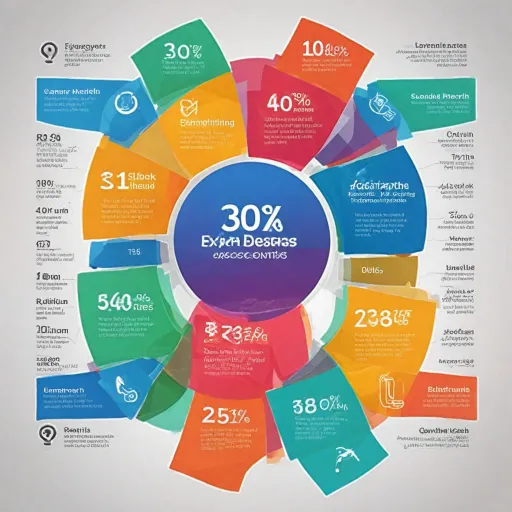
Understanding role clarity in the workplace
Why Clarity Matters for Every Employee
Role clarity is a cornerstone of effective human resources management. When employees have a clear understanding of their job roles and responsibilities, they are more likely to perform at high levels and experience greater job satisfaction. In contrast, unclear roles can lead to confusion, role conflict, and work stress, which ultimately impacts team performance and organizational outcomes.
Clarity in the workplace means that each team member knows what is expected of them, how their work contributes to organizational goals, and how their performance will be evaluated. This understanding helps reduce role ambiguity and supports better decision making. When employees understand their scope of responsibilities, they can focus on the tasks that matter most, collaborate more effectively, and maintain high standards of behavior.
- Job descriptions: Well-defined job descriptions are essential for communicating roles responsibilities and setting expectations.
- Feedback: Regular feedback from supervisors helps employees maintain role clarity and adjust their behavior based on performance insights.
- Organizational structure: Clear reporting lines and defined team structures support clarity job and minimize confusion.
Organizations that prioritize role clarity often see improvements in employee performance, reduced work stress, and higher levels of job satisfaction. Teams with a clear understanding of their goals and responsibilities are better equipped to adapt to change and achieve high performance.
For HR professionals looking to enhance role clarity, understanding the key factors that enable success in human resources is crucial. Explore more about key factors for HR enablers and how they contribute to a well-functioning organization.
The impact of unclear roles on team performance
Consequences of Unclear Roles on Team Dynamics
When employees lack a clear understanding of their job roles and responsibilities, the entire organization can feel the impact. Role ambiguity often leads to confusion about who is responsible for specific tasks, which can slow down decision making and create unnecessary work stress. Without clarity, team members may duplicate efforts or overlook important duties, resulting in decreased employee performance and lower job satisfaction. High levels of role conflict can also arise when expectations are not well defined. Employees might receive conflicting instructions from different supervisors or struggle to prioritize their workload. This confusion can erode trust within teams and make it difficult to achieve organizational goals. Maintaining role clarity is essential for fostering effective collaboration and ensuring that everyone is working toward the same objectives.How Lack of Clarity Impacts Performance and Well-being
When roles responsibilities are not clearly communicated, employees may feel uncertain about their scope responsibilities. This uncertainty can lead to increased work stress, reduced motivation, and even burnout. Teams with unclear job descriptions often experience lower engagement and higher turnover rates, as employees seek environments where their contributions are recognized and valued. Feedback loops are also affected by unclear roles. Without a clear framework for evaluating performance, supervisors may struggle to provide meaningful feedback, making it harder for employees to improve and grow. This can further hinder organizational success and limit opportunities for professional development.- Decreased employee performance due to confusion about job responsibilities
- Increased role conflict and work stress among team members
- Difficulty in achieving high levels of collaboration and productivity
- Challenges in providing effective feedback and supporting employee growth
How artificial intelligence can support role definition
Leveraging AI to Define Roles and Responsibilities
Artificial intelligence is transforming how organizations clarify job roles and responsibilities. By analyzing large volumes of organizational data, AI tools can identify overlaps, gaps, and ambiguities in job descriptions. This helps supervisors and HR teams create more precise job roles, reducing role conflict and work stress among employees. When employees understand their scope of responsibilities, they are more likely to experience high levels of job satisfaction and performance.
- Job descriptions: AI can review existing job descriptions and suggest improvements for clarity and alignment with organizational goals.
- Role mapping: AI-powered systems map out how different roles interact within teams, highlighting areas where responsibilities may be unclear or duplicated.
- Feedback analysis: By analyzing employee feedback and performance data, AI can detect patterns of role ambiguity and recommend adjustments to maintain role clarity.
With these capabilities, organizations can ensure that team members have a clear understanding of their roles and how their work contributes to team and organizational objectives. This clarity reduces role ambiguity and supports better decision making at all levels. For more on how AI is changing HR decision making, see this article on AI scores notification in HR.
Ultimately, using AI to define and refine roles helps organizations build high-performing teams, where each employee knows their responsibilities and can focus on achieving shared goals.
AI-powered onboarding for better role understanding
AI-driven onboarding: setting the foundation for clarity
When new employees join an organization, the onboarding process is their first real exposure to job roles, responsibilities, and the overall work culture. Artificial intelligence is transforming this critical phase by providing tailored onboarding experiences that help employees understand their roles with greater clarity. AI-powered onboarding platforms can analyze job descriptions, team structures, and organizational goals to deliver personalized learning paths. This ensures that each employee receives information relevant to their specific role, reducing role ambiguity and work stress from the start. For example, AI can:- Break down complex job responsibilities into manageable modules
- Highlight key expectations and performance indicators for each role
- Facilitate interactive Q&A sessions to address role conflict or confusion
- Provide real-time feedback based on employee progress and behavior
Monitoring and adjusting roles with AI insights
Real-Time Insights for Dynamic Role Management
Artificial intelligence is transforming how organizations maintain role clarity by providing real-time insights into job responsibilities and employee performance. With AI-driven analytics, supervisors and HR professionals can continuously monitor how roles are executed across teams. This allows for early detection of role ambiguity, role conflict, or overlapping responsibilities, which often lead to work stress and decreased job satisfaction.Supporting Ongoing Clarity Through Data
AI tools analyze data from various sources, such as project management platforms, employee feedback systems, and performance reviews. These insights help identify when job roles or scope responsibilities are drifting from the original job descriptions. For example, if team members are consistently reporting confusion about their responsibilities or if performance metrics indicate a drop in clarity job alignment, AI can flag these trends for further review.- Spotting gaps in job responsibilities before they impact team performance
- Highlighting high levels of role conflict or role ambiguity
- Providing supervisors with actionable recommendations for maintaining role clarity
Enabling Proactive Adjustments
With AI-generated reports, organizations can make data-based decisions to adjust roles and responsibilities. This might involve clarifying job descriptions, redefining team goals, or reallocating tasks to ensure each employee has a clear understanding of their job. By proactively addressing issues, companies can reduce work stress, improve employee performance, and foster high-performing teams.Feedback Loops and Continuous Improvement
AI also facilitates ongoing feedback between employees and supervisors. Automated surveys and sentiment analysis help gauge how well employees understand their roles and whether they feel supported in their work. This feedback loop is crucial for maintaining role clarity and ensuring that organizational behavior aligns with strategic goals. Over time, these insights support continuous improvement in role definition and clarity role management, helping organizations adapt to change while keeping teams focused and engaged.Challenges and ethical considerations in using AI for role clarity
Balancing Automation and Human Judgment
Integrating artificial intelligence into human resources processes brings significant benefits for role clarity, but it also introduces challenges. One of the main concerns is finding the right balance between automated decision making and the nuanced judgment that HR professionals provide. While AI can analyze large volumes of data to identify gaps in job roles, responsibilities, and team behavior, it may not fully capture the unique context of each organization or the subtle dynamics within teams. Relying solely on algorithms could risk overlooking important aspects of employee performance, job satisfaction, and organizational culture.
Data Privacy and Employee Trust
AI-driven systems often require access to sensitive employee data to monitor and adjust roles responsibilities. This raises questions about data privacy and how organizations use information related to job descriptions, feedback, and performance. Employees may feel uncomfortable if they perceive that their work behavior is being constantly tracked or analyzed. Maintaining transparency about how AI tools are used, what data is collected, and how it informs decision making is essential for building trust and ensuring high levels of employee engagement.
Bias and Fairness in Role Definition
Another challenge is the risk of bias in AI algorithms. If the data used to train AI systems reflects existing inequalities or role ambiguity, the technology may reinforce rather than resolve issues like role conflict or unclear scope responsibilities. Organizations need to regularly audit their AI tools to ensure fair treatment of all team members and to avoid perpetuating discrimination in job roles or responsibilities. This is especially important for maintaining role clarity and supporting diversity within teams.
Ethical Use and Accountability
With AI playing a larger role in defining and monitoring job responsibilities, questions of accountability become more complex. Who is responsible if an AI system makes a recommendation that leads to increased work stress or negatively impacts employee performance? Supervisors and HR leaders must remain actively involved, using AI insights as a tool to support—not replace—their expertise. Clear guidelines and ethical standards should guide the use of AI in HR to ensure that technology enhances, rather than undermines, the clear understanding of roles and organizational goals.
Continuous Learning and Adaptation
Finally, organizations must recognize that AI systems require ongoing updates and oversight. As teams evolve and job descriptions change, the algorithms supporting role clarity must adapt as well. Regular feedback from employees and supervisors is crucial for maintaining role clarity and ensuring that AI tools remain aligned with the real-world needs of the organization. This collaborative approach helps prevent role ambiguity and supports high levels of job satisfaction and employee performance.












